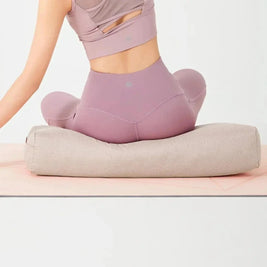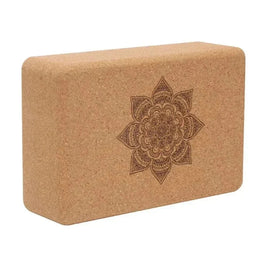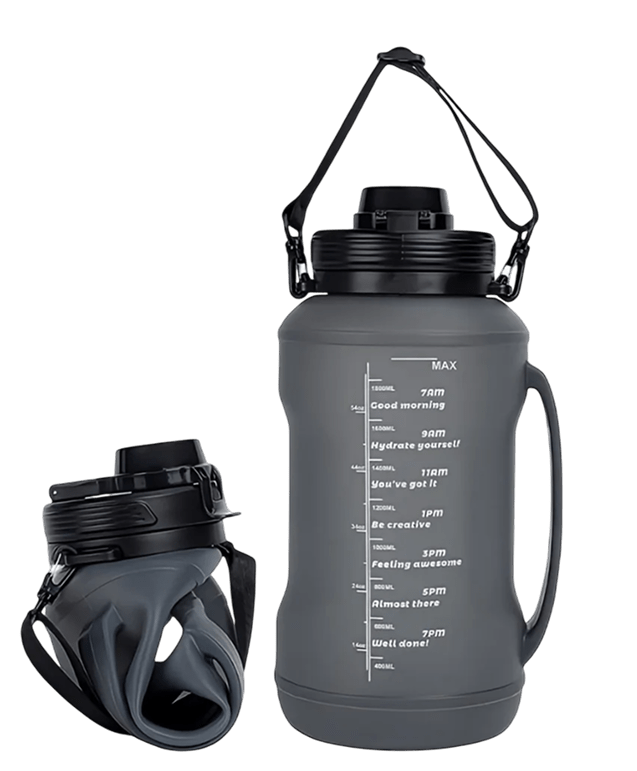Postnatal yoga: regain energy and tone after childbirth
August 17, 2025 5 min Read
After childbirth, the body needs gentleness, patience, and a secure environment. This guide offers a gradual return to postnatal yoga: breathing, perineum, back, and deep abdominal muscles, with sample sessions and appropriate equipment.
Golden rules before resuming
- Medical agreement : wait for the postnatal visit and follow the recommendations (delay often longer after cesarean section).
- Priority to the perineum : work on exhalation and the pelvic floor before any overall strengthening.
- Respect for diastasis : favor transverse (deep sheathing), avoid crunches and direct abdominal pressure at the beginning.
- Fatigue & lactation : short sessions, regular hydration, breaks as needed.
Useful material for a comfortable recovery
- Thick yoga mat : cushioning for knees and wrists.
- Cushions/bolsters : support when sitting and lateral relaxation.
- Bricks & straps : adjust the amplitude without forcing.
- Non-slip towel : comfort and hygiene (postpartum sweats).
- Comfortable yoga bra & leggings for a stable fit.
- Grippy yoga mat + mat bag to practice wherever you want.
Postnatal roadmap (indicative)
Phase 1: Gentle reactivation (approximately weeks 0–6)
- Diaphragmatic breathing : active exhalation (imagine closing a zipper from pubis to navel).
- Very gentle mobility : pelvic tilts, lateral stretches seated on a cushion .
- Lateral relaxation on the left side, with supports under the bust and between the knees.
Phase 2: Postural tone & back (weeks 6–12+)
- Transverse : breath > perineum engagement > slight retrogersion (without pushing the stomach).
- Moderate cat-cow , gentle bridges (feet close to the pelvis), chest stretches.
- Assisted balances (hands on bricks ) to restart deep core strengthening without abdominal pressure.
Phase 3: progressive dynamic recovery (as soon as medical clearance is given)
- Slow Hatha/Vinyasa type sequences with controlled transitions.
- Overall strengthening: short lunges, half warrior, light hip extensions.
- Gentle cardio: rhythmic breathing without apnea, progressive amplitude.
Two typical sessions
“Gentle awakening” session (15–20 min, Phase 1)
- Breathing (3 min) sitting on a cushion : long exhalation + perineum.
- Mobility (6 min): pelvic tilts, shoulder circles, lateral stretches with strap .
- Back recovery (6 min): slow cat-cow, modified child's pose (supports under the bust).
- Relaxation (3–5 min): left lateral decubitus, towel under the head if necessary.
“Safe tonicity” session (25–30 min, Phase 2)
- Breath & transverse (4 min): active expiration + perineum.
- Back & hips (8 min): gentle bridges, low lunge with hands on bricks .
- Stability (8–10 min): assisted balances, half-plank on bricks if medically validated, without arching the lumbar region.
- Return to calm (4–6 min): breathing + self-stretching with strap .
Movements to avoid at the beginning
- Crunches, sit-ups, long planks until the diastasis/perineum is restored.
- Deep twists and hyperextensions (stress on scars and pelvic floor).
- Impacts and jumps : wait for the green light from a professional and good continence during exercise.
Fit and comfort
Choose breathable and stable clothing: yoga bra , sports leggings and crop tops for comfortable support without compression.
To remember
Postnatal yoga is a path: progress gradually , listen to your sensations and first strengthen the perineum and transverse muscles . With a comfortable mat and suitable supports , you will regain energy, mobility and confidence step by step.
Have questions or need expert help?
Our team is here to support your growth.
Book a free consultation today

Professional Yoga Bolster | Yogaova
62,95 €

Double-Walled Insulated Bottle | Yogaova
26,32 €

Insulated Bottle | Yogaova
17,52 €

7 Chakra Tree of Life Bracelet Silver | Yogaova
14,95 €

7 Chakra Double Row Stone Bracelet | Yogaova
17,95 €

Seamless Fitness Bra | Yogaova
32,00 €

Good Support Sports Bra | Yogaova
42,00 €

Wooden Yoga Block | Yogaova
26,95 €








